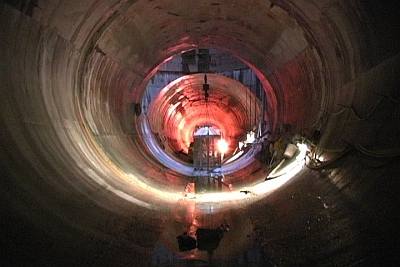
e-Newsletter | 08/06/2013 |
|||
|
Thursday marks the 20th Anniversary of our Deep Tunnel's first day of operation on August 8, 1993. We should all reflect on this momentous occasion. I'll readily admit that the Deep Tunnel isn't perfect. It's been a target of expensive lawsuits and sewer wars that have divided our region. It hasn't solved all of our water quality problems, but here are the facts on what it has accomplished:
Cleaner rivers led to the construction of the Milwaukee Riverwalk and have helped to revitalize the river economy of restaurants, condos, and offices with millions of dollars in redevelopment. We also have a safer drinking water supply that is protected from most pollution. I'd argue this is directly attributable to the Deep Tunnel. The Deep Tunnel was not meant to be perfect. Our predecessors, 30 years ago, knew that "perfect" would be too expensive. They also were aware that there were, and still are, many other sources of pollution that would do more harm than one to two sewer overflows per year. We understand today that these other sources of pollution are coming from urban and agricultural stormwater runoff. A June 26, 2013 story in the Milwaukee Journal-Sentinel highlighted this fact. It said that, in 2012, South Shore Beach was the second dirtiest beach in the nation. Of course, many thought this was due to the failure of the Deep Tunnel. The funny thing is that, in 2012, we had a drought. There were no overflows from the Deep Tunnel. Remember? The only overflow was a 16,000-gallon event that occurred prior to the swimming season on the Kinnickinnic River more than six miles upstream from South Shore Beach. That overflow was from a sewer, not the Deep Tunnel. The newspaper rightfully identified the source of the South Shore problem as polluted stormwater runoff. This is why our predecessors did not build a perfect system. They knew that it would be better to be almost perfect (98.3%) and save some money to invest in the other causes of water pollution. The Deep Tunnel has also been a very cost effective investment. If we were to take the total capital cost of the Deep Tunnel in our region ($1,267,741,000) and calculate the cost per gallon (98.5 billion) of pollution prevented from reaching Lake Michigan, the result would be 1.3 cents per gallon. As time goes on, this cost per gallon will get even smaller. That seems like a very economical price to pay for a cleaner lake, cleaner rivers, and safer drinking water. Now that the Deep Tunnel is 20 years old, maybe we can stop debating the Deep Tunnel issue and start talking about what more we need to do to protect Lake Michigan for our kids. Our ancestors did this for us, and we should all thank them. Now it is our turn, and the Regional Green Infrastructure plan just approved by the MMSD Commission is another step toward that goal.
|
|||
 |
|||
Milwaukee Metropolitan Sewerage District260 W. Seeboth Street | Milwaukee, WI 53204Find MMSD on FacebookClick here to subscribe Click here to unsubscribe |
|||
